# The Iconic 'Pale Blue Dot': A Reflection on Humanity's Place
Written on
Chapter 1: Voyager's Historic Journey
On February 14, 1990, the Voyager 1 spacecraft captured the most distant image of Earth ever, famously known as the "Pale Blue Dot." This photograph, taken from billions of miles away, serves as a poignant reminder of how precious and isolated our planet truly is. There are living individuals today who recall a time when no human-made craft had ventured beyond Earth's atmosphere. Even now, launching a spacecraft into space remains an expensive and resource-intensive endeavor.
As the space race progressed, humanity broke free from Earth's orbit, explored the Moon, and dispatched probes to every planet in our Solar System. Among these, Voyager 1 and 2 have traveled far beyond our celestial neighborhood. While Voyager 2 took a grand tour of the outer planets, Voyager 1 focused primarily on Jupiter and Saturn before using gravitational assists to escape the Solar System. Currently, it stands as the farthest human-made object from Earth, over 145 astronomical units away—more than three times the distance from the Sun to Pluto.
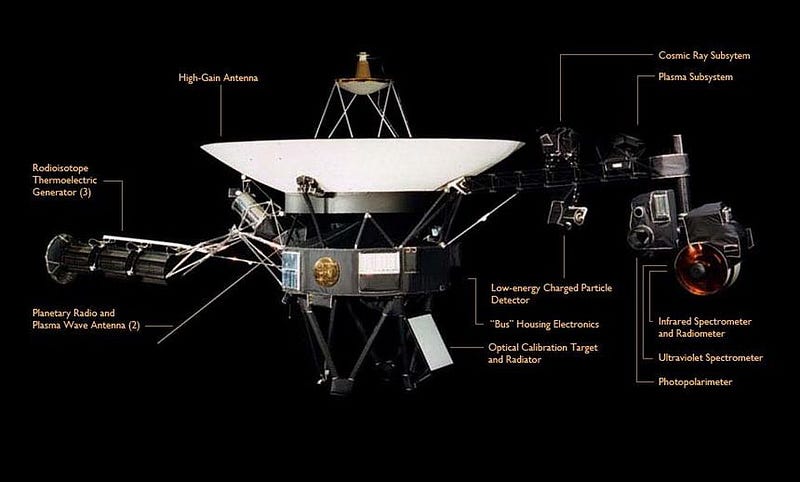
In August and September of 1977, the Voyager probes were launched to study the outer Solar System. Voyager 2 was the first to launch, followed by its twin just sixteen days later. Voyager 1's primary mission included investigating Jupiter, Saturn, and Titan, its largest moon. After completing its observations, it achieved escape velocity and set a record for the most distant human-made object.
Chapter 2: Capturing the Family Portrait
Voyager 1 completed its main mission in 1980 and subsequently embarked on an extended mission. Instead of remaining within the plane of the Solar System, it was directed towards the constellation Ophiuchus, venturing out of our Solar System. Thanks to its trajectory and gravity assist, Voyager 1 became the most distant human-made object from Earth, a title it secured in 1998.
On that significant day in February 1990, at Carl Sagan's urging, Voyager 1 turned around and took a series of images of the planets in our Solar System, creating a unique family portrait from a distance of 6 billion kilometers (approximately 3.7 billion miles). This image provided a view of our home that had never been captured before.
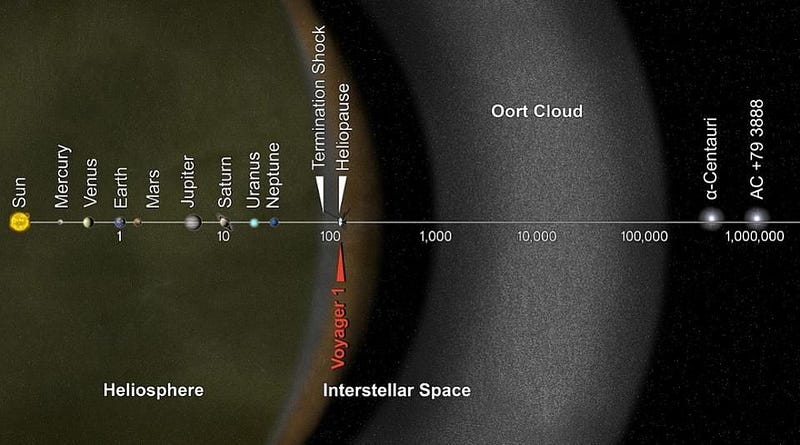
The resulting mosaic consists of 60 frames that reveal the Sun and the planets from an unprecedented perspective. To fully grasp the significance of this image, it's important to understand the immense distances involved. For instance, the Sun measures about 1,400,000 kilometers across, appearing only as a small dot from Voyager 1's vantage point.

The planets also appear minuscule in the image, with Earth being merely a pixel in size. What the image cannot convey is the rich diversity of life, the mountains, oceans, and cities that make up our planet. From such vast distances, Earth is nothing more than a faint dot, underscoring our fragility in the grand cosmos.
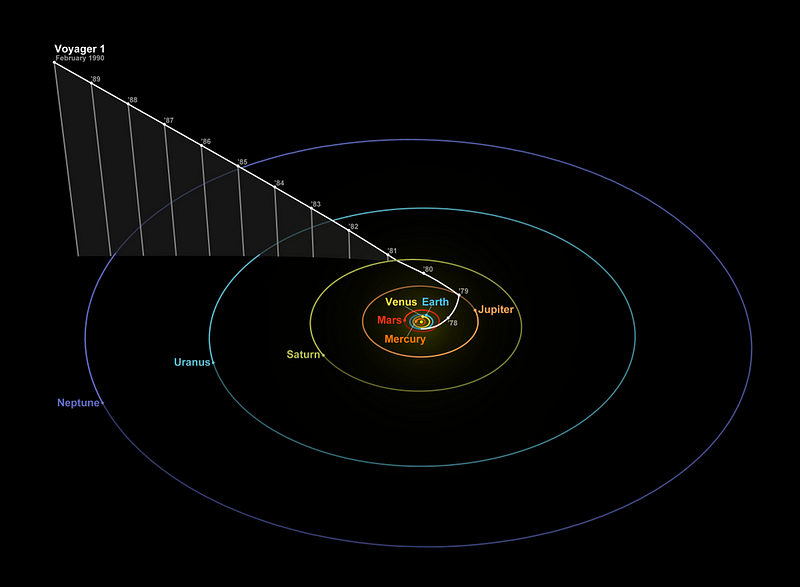
As we reflect on this iconic image, we must remember that it symbolizes the countless struggles and achievements of humanity. For millennia, people have fought for resources on this tiny speck. Nations have risen and fallen, and individuals have sought connection and meaning amidst chaos.
But we are not confined to Earth alone. Our advancements in science and technology, along with collaborative efforts, have allowed us to explore and understand the universe. This "pale blue dot" is our shared home, and perhaps one day, future generations will journey beyond what we can currently imagine.
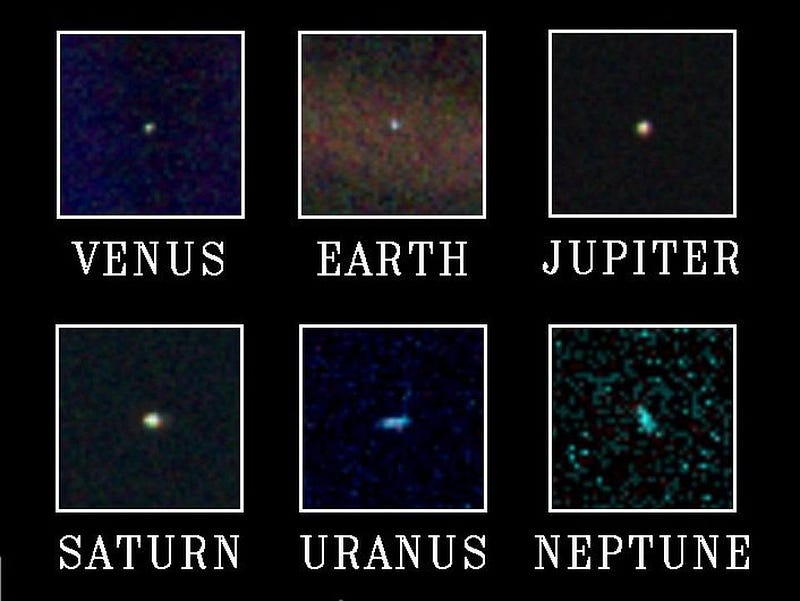
Today marks the 29th anniversary of the family portrait taken by Voyager 1, a reminder of our place in the cosmos. The Voyager spacecraft, along with others like the Pioneers and New Horizons, continue their journey into interstellar space. Voyager 1 remains operational and will likely hold its record as the most distant human-made object for the foreseeable future.
In a world where we can now see Earth from space, the beauty and impact of human presence are evident, yet the vastness of the universe reminds us of our isolation.

As we celebrate this milestone, we are reminded of Bill Anders' words during the Apollo 8 mission: “We came all this way to explore the moon, and the most important thing is that we discovered the Earth.” Humanity’s quest for knowledge and exploration is ongoing, and now is the time to invest in our future, ensuring that we continue to seek understanding in the grand scheme of the universe.
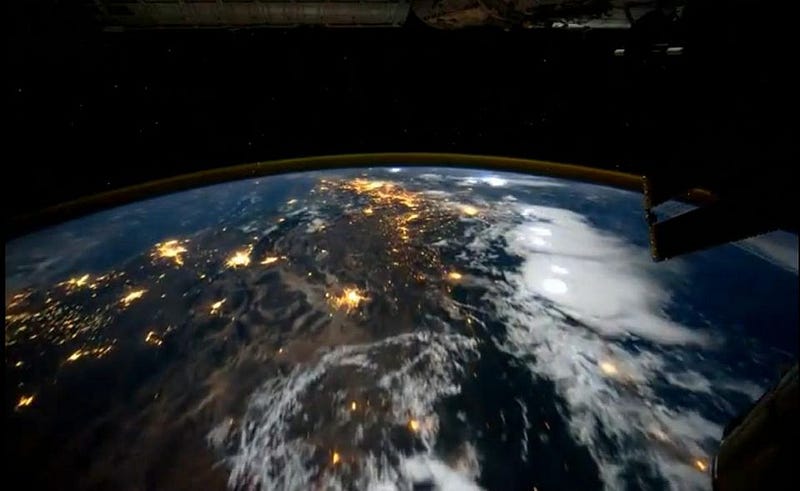
This moment in history calls for a renewed commitment to education, scientific exploration, and collaboration. As we venture into the unknown, we must remain aware of our place in the universe and ensure we create a future that reflects the best of humanity.

The journey of humanity is filled with challenges and triumphs, and while we have yet to encounter other intelligent life, we must remain steadfast in our pursuit of knowledge and understanding. The legacy we create today will shape the future of generations to come.
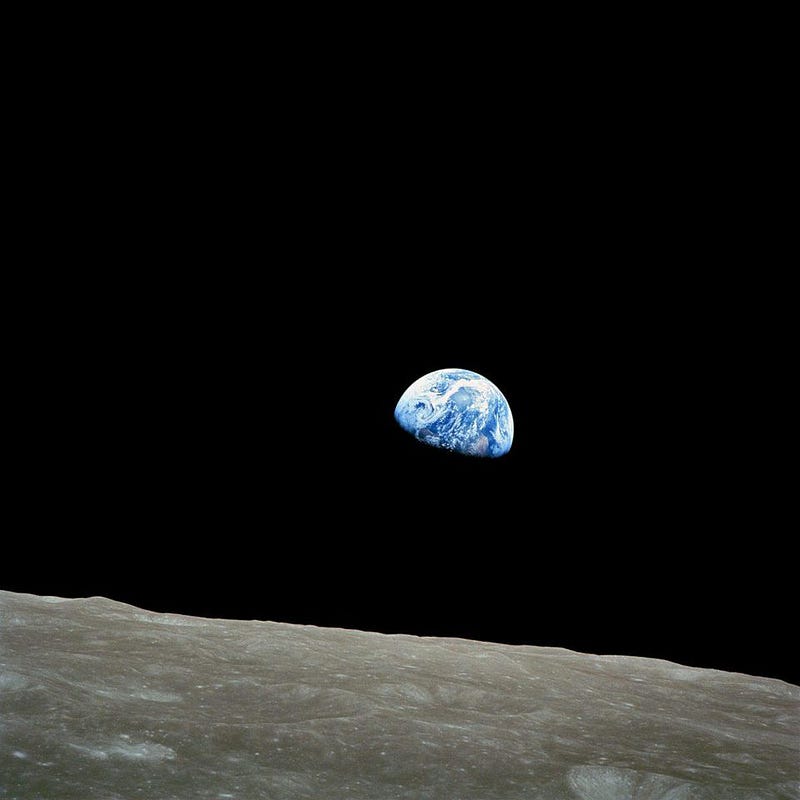
In conclusion, as we look back at the 'Pale Blue Dot' and the family portrait it represents, let us not forget the lessons of humility, unity, and the importance of our shared journey through the cosmos. It is up to us to ensure that the future of humanity is bright and filled with potential, embracing the spirit of exploration that has defined our species.